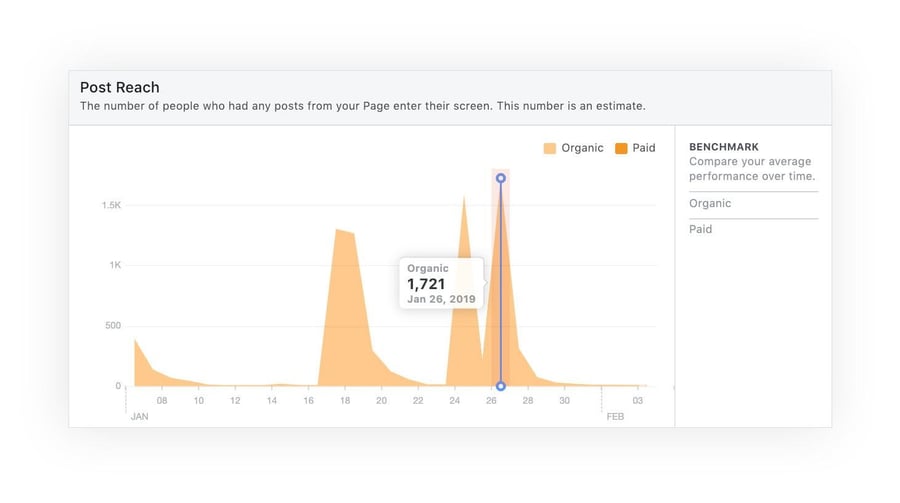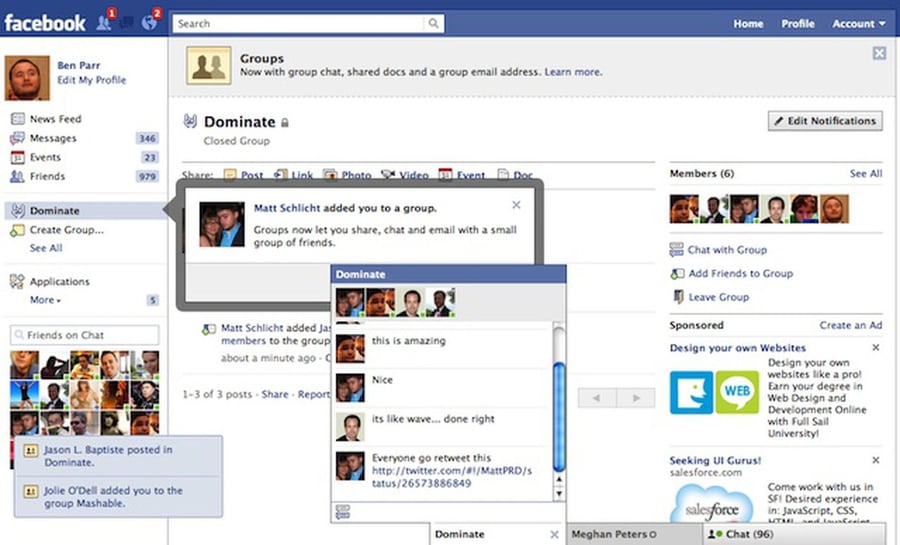
Every year, the competitive field of marketing becomes more and more challenging. Markets are already saturated with alternative options, even niche products. While that may make it more difficult to create an impact in your space, your marketing can still flourish. Thanks to the substantial reach of social media platforms, particularly Facebook, it’s possible to create a larger customer basis and much greater product awareness.
The War on Organic Reach
With nearly 3.5 billion users, social media platforms can have an enormous impact on either growing your business or giving others an edge over you if it’s not well-utilized. Yet, as social media sites try to monetize their platforms, they’re making it harder for businesses to reach people without paying.
The already narrow funnel of commercial traffic into user’s feeds is now being diminished even further. There are currently millions of businesses competing for limited space in users’ news feeds, as Facebook tries to give people more relevant or interesting results and fewer advertisements and business posts.
This doesn’t necessarily spell out defeat for every opportunity your business has on social media. It just means you have to adapt to keep up with the changes in the industry. Through greater creativity and the right strategies, you can help keep your costs lower and organic reach higher than your competitors.
Boosting Organic Reach on Facebook
You may be wondering how to even begin to tackle the complicated mess of organic marketing on Facebook. Here are a couple of steps that will help you navigate the tools and tricks to creating a more effective marketing campaign for your business:
1) Track Your Stats
The first thing you must do is get a basic understanding of the current situation. Just like you need to follow up on customer service statistics for your industry in general, Facebook itself has its own statistics for you to track. Facebook has recently added and updated a detailed system called Facebook Insights, which offers a wide variety of instruments to assist you in tailoring your campaign for your specific customers. There are dozens of options to assess your current performance, but the three most important tools are:
- Page Visits
- Best Post Types
- People

Page Visits refers to how many users have actually seen your content and interacted with your page because of it. It breaks this category down even further by showing how many individuals saw it in the first place, tracking your likes and then displaying the level of engagement from viewers.
In order to fully capitalize off the information you now know about your Page Visits, use the Best Post Types section to truly elevate the standard of your companies marketing. This data shows which posts have the highest reach and which have the highest engagement. Posts with photos versus videos or posts with more engagement-focused content is a standard comparison you can make from this section.
People are the foundation of marketing. If you aren’t fitting WHAT you’re advertising to WHO you’re reaching, your organic reach will not count for much. This tool allows you to analyze the stats regarding the users interacting with your content. From gender diversity and age ranges to nationalities and primary languages, it can be tremendously useful in uncovering more about who your consumer base truly is.
When you track and use these tools at your disposal, you’ll be more than capable of getting a better determination of not only how many people see your posts, but which ones receive more engagement and by what demographic of individuals. This translates into better reach because you can make more tailored content to fit your brand message and reach people effectively.
2) Balance Current & Evergreen Content
You want to send out messages that resonate with people for years to come. But you may also want to jump into ongoing conversations and ride the hype train now and again or fit yourself into an existing trend. You can and should do both if you want to milk the most out of Facebook’s algorithm.
Balance your evergreen content and current content. Evergreen content is the content that never expires. The topics and content in general are not temporary in nature. An example of this might be “how to bake a cake.” People have been baking cakes for thousands of years and they’re unlikely to stop any time soon. Your content could be as relevant to people 100 years from now as it is to people today. Evergreen content takes more work to create and virtually no work to maintain, so you can get a lot of use out of it without having to constantly update it.
In contrast, current content, also called non-evergreen content, relates to more temporary topics. This article itself is an example of non-evergreen content! The strategies explained here might be effective for the next 3 to 5 years, but who knows if Facebook will even exist in the next 10 years and if it will look the same even if it does?
Content being current isn’t a criticism. Non-evergreen content often gives you large bursts of trending traffic that fizzle out over time as people lose interest in the topic. Evergreen content stays relevant and usually produces a steady stream of views. By using BOTH, you can attract more attention to yourself while keeping people’s interest and building authority simultaneously.
3) Create a Separate, Invite-Only Group
One of the slightly unorthodox ways you can build your page reach is by creating a separate Facebook group and inviting the most engaged people from your page. These are people with some interest in your brand or your products already, so it’s likely that you can build a community for discussions around your brand.

Invite-only groups don’t always work, but they’re often effective at stimulating interesting conversations that help keep people interested in your brand and in-touch with your messaging. Over time, this tends to spill into your main brand page as those same people engage with it more and spread your messaging through word of mouth. It’s an effective long-term strategy.
4) Use New Facebook Features
Facebook is in the midst of both trying to maximize the average user time spent on their site and earning more profit from businesses through their attempts to market on the platform. In order to achieve this, Facebook has instituted a new algorithm which limits the number of posts users see that are unrelated to their own engagement trends. Therefore, if you post a lot of advertisements and content with very low engagement or a high negative feedback score, then it’s likely that you’ll see a decrease in organic reach.
To combat this, you can decrease the number of posts you make that don’t fit into the most valuable category of your marketing scheme. This might include photo posts or text-only posts that don’t promote high levels of engagement. Additionally, Facebook favors the use of their new features, such as live streaming, and tends to promote these types of posts – even sending out notifications to people when you start a live stream.
Using new features can give you an edge. It’s a bit of an industry open secret, but most social media platforms give you a little boost if you use their new features. You might be highlighted somewhere or put into more recommendation boxes. It’s a subtle, but powerful way to get ahead.
5) Focus on Audience Value
What the customer is focused on should determine the primary direction of your marketing campaign. Using the tools from Facebook Insights can be especially useful in assessing what content receives the most community recognition and engagement. If you discover polls, photo ads, or perhaps questionnaire-style posts earn the most activity, continue to provide that favored content with other content types mixed in to keep it from getting stale.
If you’re listening to your audience and giving them posts that are valuable to them, engagement and higher reach will naturally follow as people recognize the value that they’re getting from you.
6) Differentiate Your Brand
Stay true to your personal branding and values as a company. Your customers choose your product for a reason, so diverting from that could pose potential problems. Appealing trends pop up all the time and offer seemingly perfect ways to garner attention, yet all too often this leads to loss of customer interest.
Differentiate yourself and stick to your core message. Show people what sets you apart, then work that to your advantage and build your audience around it!
Wrapping Up
None of these tips are 100% guaranteed to work for every business. You have to experiment a little to find out what works best for you, then lean into that to build your engagement over time. Use this as a guideline to help you determine your next steps forward!





Leave a reply or comment below